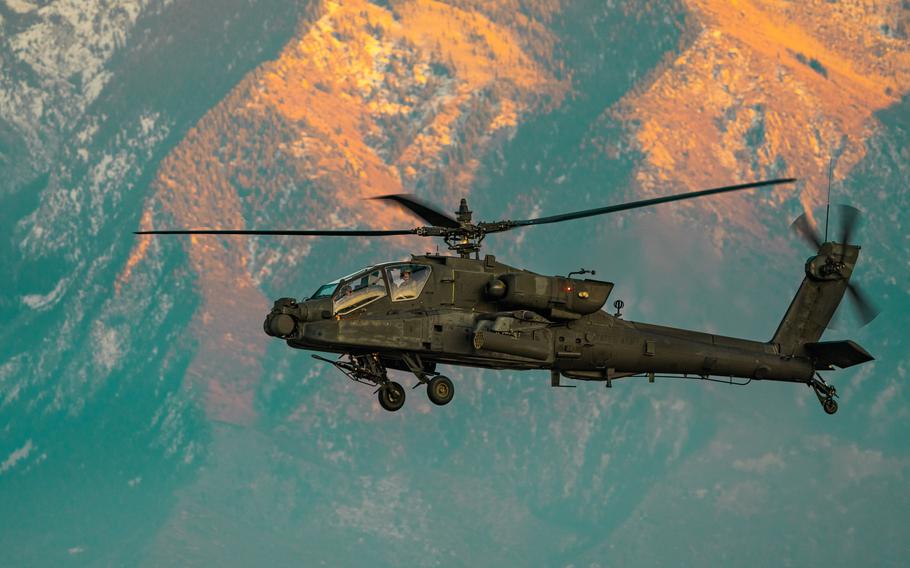
An AH-64 Apache helicopter takes off from West Jordan, Utah, during a training exercise in 2019. Two soldiers were injured Feb. 12, 2024, when their Apache crashed near the Army Aviation Support Facility in West Jordan. (UTNG Visual Information Office)
Two American military pilots were hospitalized this week after their AH-64D Apache Longbow helicopter crashed during an exercise near Salt Lake City, according to officials and local news reports.
The crash occurred about 1:20 p.m. Monday near the Army Aviation Support Facility at South Valley Regional Airport in West Jordan, the Utah National Guard said the same day in a post on X, formerly known as Twitter.
The pilots freed themselves from the wreckage and were taken to a local hospital in stable condition, the posts on X said.
The two-seater aircraft was carrying a National Guard instructor pilot and an Air Force pilot on a familiarization flight, local NBC affiliate KSL reported.
During such flights, a pilot new to the aircraft receives guidance from an experienced instructor.
“We don’t have a lot of detail on the cause of the accident right now,” Army Lt. Col. Chris Kroeber, a Utah National Guard spokesman, told local ABC affiliate KUTV on Monday.
There was no ammunition on board the helicopter at the time, Kroeber said.
A team from the Army Combat Readiness Center at Fort Novosel, Ala., is scheduled to begin investigating the crash as early as Tuesday, officials said, adding that the investigation is expected to take about three months.
This was the third accident involving the unit’s Apache since 2007, KUTV reported.
In 2023, following a collision of two Black Hawk helicopters in Kentucky that killed nine and a midair collision of two Apaches in Alaska, the Army ordered a safety stand-down in April, grounding all its helicopters.
Less than a month after the stand-down, two Apache pilots were injured in a crash in May during a training flight in Washington state.
The Army’s own five-year safety review in 2020 found that Apaches accounted for more than a quarter of its rotary-wing mishaps.
From 2016 to 2020, the combat helicopter was involved in 77 mishaps, resulting in $384.5 million in damage and 12 fatalities.
The report identified human error as the primary cause in 87% of class-A mishaps, which are those resulting in either total destruction of the aircraft, a direct cost of at least $2 million or the death or permanent total disability of those on board.